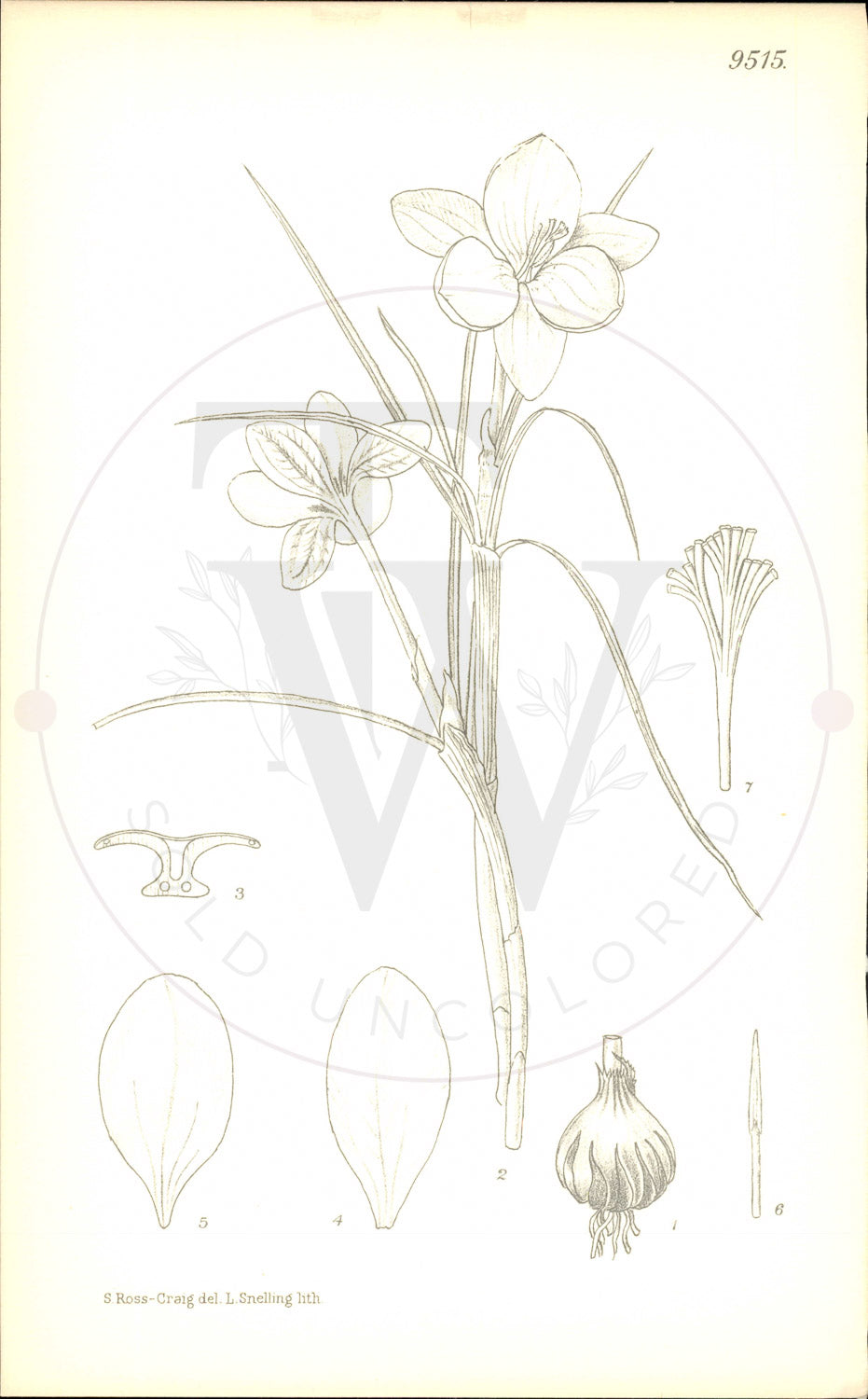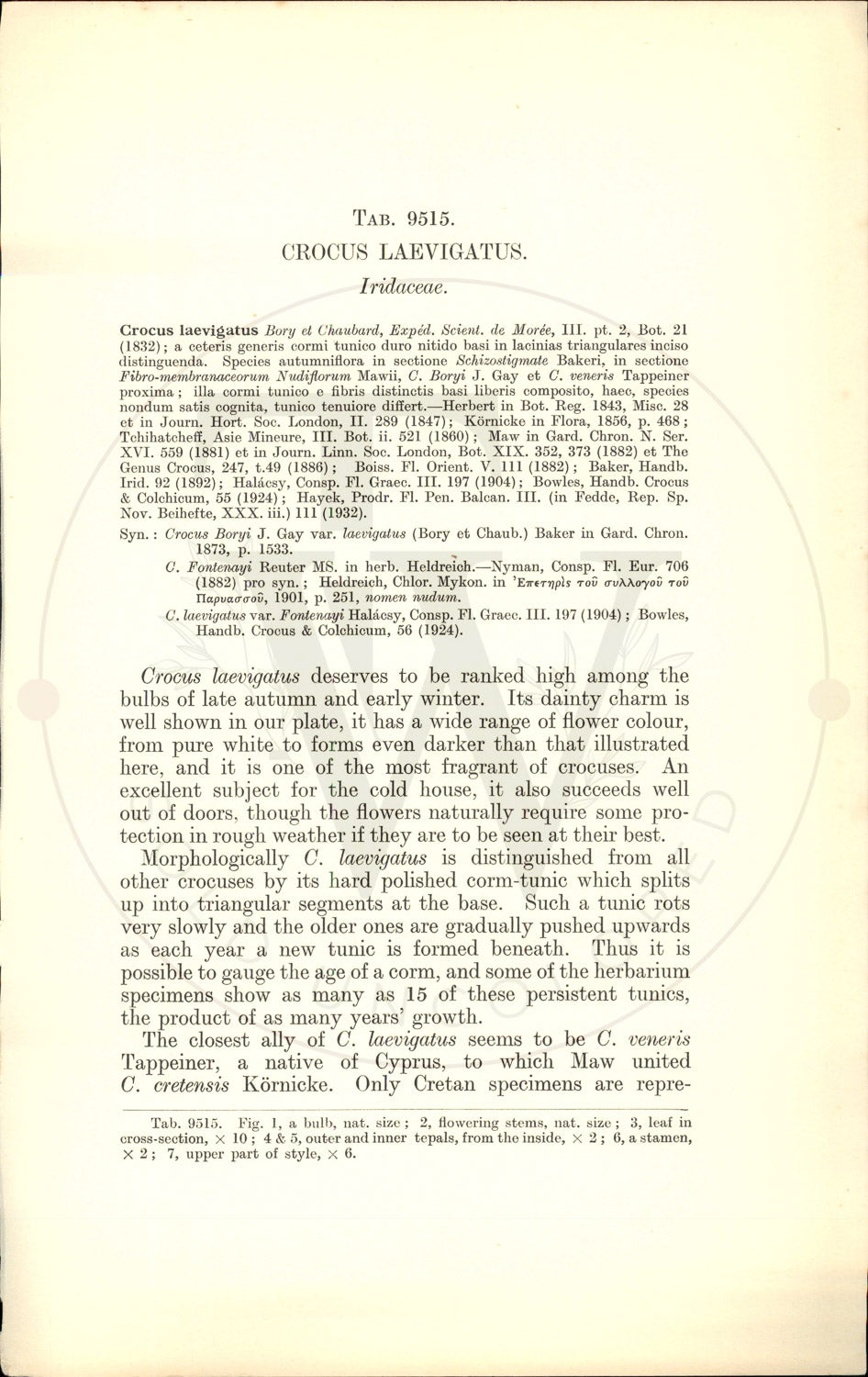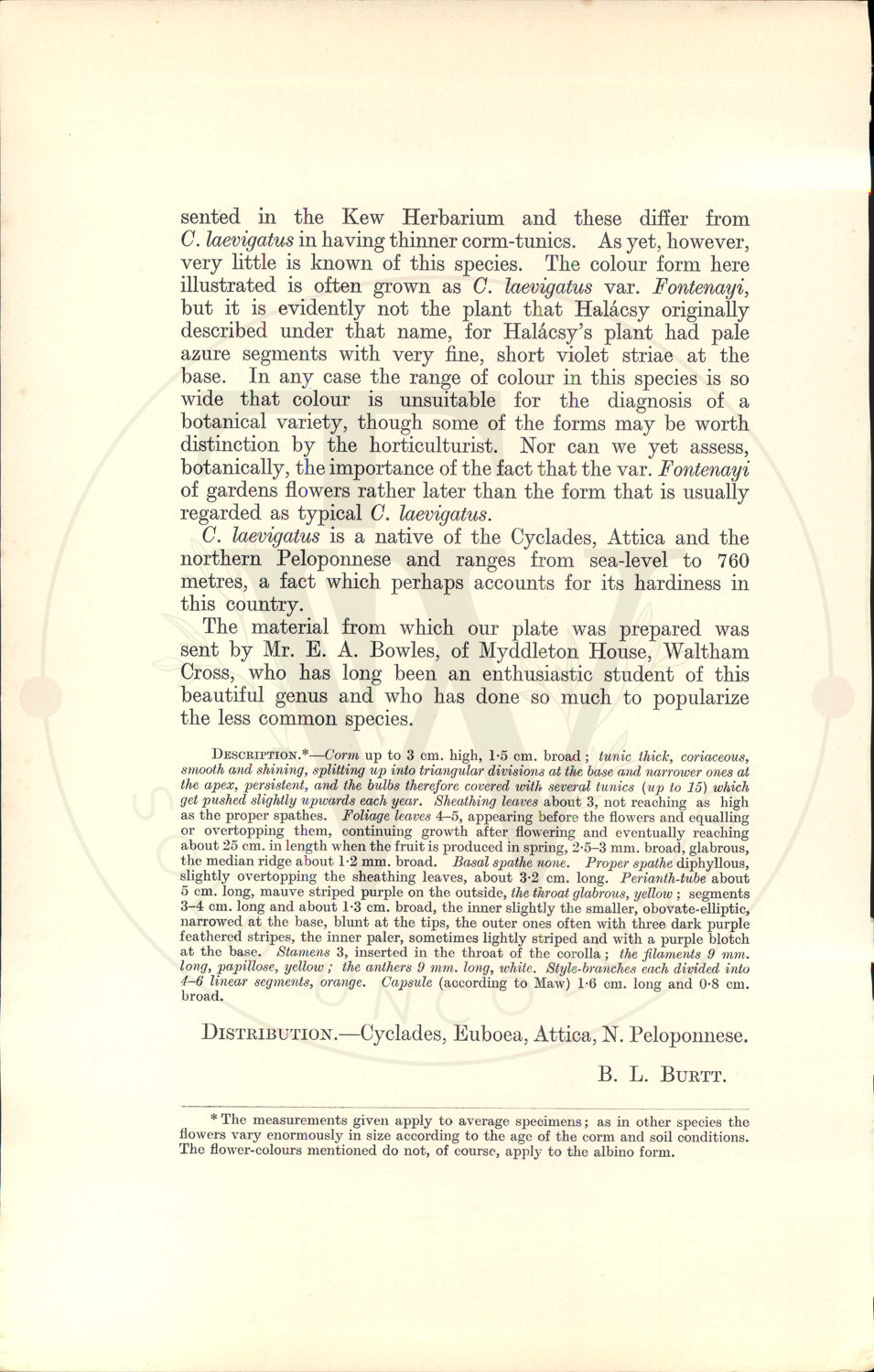Curtis Botanical Magazine
Plate 9515 - Crocus laevigatus
Plate 9515 - Crocus laevigatus
Couldn't load pickup availability
Curtis's Botanical Magazine - Plate 9515
Crocus laevigatus
Family: Iridaceae • Native Region: Cyprus • Publication Date: January 1st, 1934
Distribution: Cyclades, Euboea, Attica, N • Tab Author: B. L. BURTT
Botanical Description
But it is evidently not the plant that Hal csy originally described under that name, for Hal csy's plant had pale azure segments with very fine, short violet striae at the base. In any case the range of colour in this species is so wide that colour is unsuitable for the diagnosis of a botanical variety, though some of the forms may be worth distinction by the horticulturist. Nor can we yet assess, botanically, the importance of the fact that the var. Fontenayi of gardens flowers rather later than the form that is usually regarded as typical C. laevigatus. C. laevigatus is a native of the Cyclades, Attica and the northern Peloponnese and ranges from sea-level to 760 metres, a fact which perhaps accounts for its hardiness in this country. The material from which our plate was prepared was sent by Mr. E. A. Bowles, of Myddleton House, Waltham Cross, who has long been an enthusiastic student of this beautiful genus and who has done so much to popularize the less common species. DESCRIPTION.*-Corm up to 3 cm. high, 1-5 cm. broad; tunic thick, coriaceous, smooth and shining, splitting up into triangular divisions at the base and narrower ones at the apex, persistent, and the bulbs therefore covered with several tunics (up to 15) which get pushed slightly upwards each year. Sheathing leaves about 3, not reaching as high as the proper spathes. Foliage leaves 4-5, appearing before the flowers and equalling or overtopping them, continuing growth after flowering and eventually reaching about 25 cm. in length when the fruit is produced in spring, 2.5-3 mm. broad, glabrous, the median ridge about 1-2 mm. broad. Basal spathe none. Proper spathe diphyllous, slightly overtopping the sheathing leaves, about 3.2 cm. long. Perianth-tube about 5 cm. long, mauve striped purple on the outside, the throat glabrous, yellow; segments 3-4 cm. long and about 1.3 cm. broad, the inner slightly the smaller, obovate-elliptic, narrowed at the base, blunt at the tips, the outer ones often with three dark purple feathered stripes, the inner paler, sometimes lightly striped and with a purple blotch at the base. Stamens 3, inserted in the throat of the corolla; the filaments 9 mm. long, papillose, yellow; the anthers 9 mm. long, white. Style-branches each divided into 4-6 linear segments, orange. Capsule (according to Maw) 1.6 cm. long and 0.8 cm. broad. DISTRIBUTION. Cyclades, Euboea, Attica, N. Peloponnese. B. L. BURTT. * The measurements given apply to average specimens; as in other species the flowers vary enormously in size according to the age of the corm and soil conditions. The flower-colours mentioned do not, of course, apply to the albino form.
Synonyms
Crocus Boryi J. Gay var. laevigatus (Bory et Chaub.) Baker in Gard. Chron.
1873
(1882) pro syn.
Papva ov
About This Print
Original black and white uncolored botanical print from Curtis's Botanical Magazine (established 1787). This 9000s series print is from unissued publisher stock, never hand-colored, representing the authentic plate as it appeared in the magazine. Edited by Sir Arthur William Hill for The Royal Horticultural Society, London.
Share







